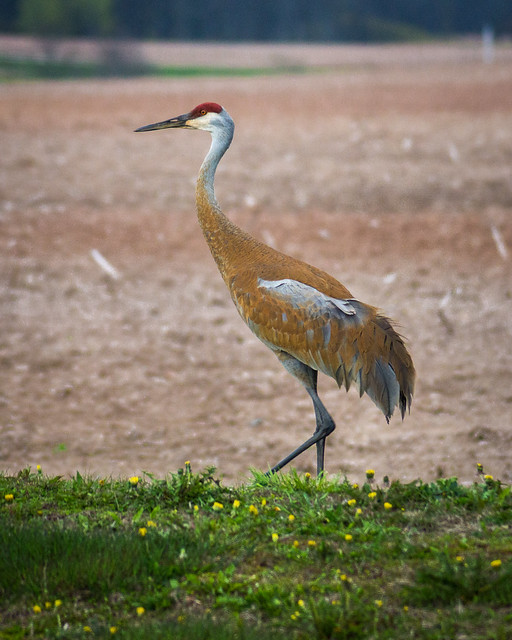Antigone Canadensis
Sandhill Crane in Profile

The stately Sandhill Crane is a common sight in the farm fields of rural northeast Wisconsin during spring.
As I’m typing these notes, I can hear the loud, unmistakable call of the Sandhill Cranes interrupting the early morning silence around our rural homestead. I can’t see any, but they are out there.
This is the second of two Sandhill Cranes that appeared in my yard a couple of weeks ago. Take a look the first image and the story behind it, titled “Crane Down.”
According to Wikipedia…
The sandhill crane (Antigone canadensis) is a species of large crane of North America and extreme northeastern Siberia. The common name of this bird refers to habitat like that at the Platte River, on the edge of Nebraska’s Sandhills on the American Plains. This is the most important stopover area for the nominotypical subspecies, the lesser sandhill crane (Antigone canadensis canadensis), with up to 450,000 of these birds migrating through annually.
Adults are gray overall; during breeding, their plumage is usually much worn and stained, particularly in the migratory populations, and looks nearly ochre. In flight, their long, dark legs trail behind, and their long necks keep straight. Immature birds have reddish-brown upperparts and gray underparts. These cranes frequently give a loud, trumpeting call that suggests a rolled “r” in the throat, and they can be heard from a long distance. Mated pairs of cranes engage in “unison calling”. The cranes stand close together, calling in a synchronized and complex duet. The female makes two calls for every one from the male.
You can view a full-screen version of this image by clicking on the photo.
All of the photos I post are available for purchase. If you’d like to buy one, click on the blue “Buy this Online” bar below for a variety of print and frame options or contact me for digital purchase and licensing options.


















































